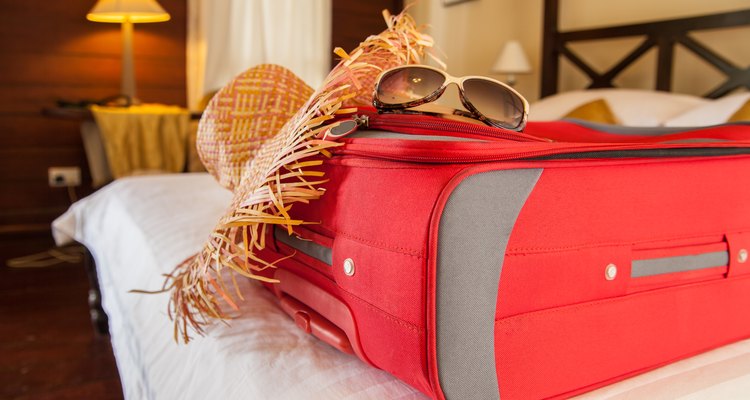
sculder19/iStock/GettyImages
How to Pack Your Bags for Fun in Paradise
Hawaii's year-round sunshine, laid-back lifestyle and landscapes that inspire you to spend time lounging or enjoying unforgettable family adventures all make packing your suitcases a breeze. Lightweight summer clothes take minimal luggage space, and swimsuits are a higher priority than more substantial outfits, making a carry-on-only approach achievable for most travelers. Another plus is that kid-sized Hawaii-friendly clothes pack up really small, so sharing suitcases could be an option too. You do, however, need to consider the activities you all intend to pursue while exploring the islands. Some call for certain clothing, footwear and equipment that you'll need to bring, buy, borrow or rent. In these cases, a little more planning is needed.
What to Bring: The Basics
The bulk of the clothing your family will need for a vacation in Hawaii is lightweight, casual summer clothing. At least two swimsuits, several pairs of shorts, T-shirts, tank tops and a couple of sundresses for women and short-sleeved shirts for men are appropriate for most Hawaii activities. Flip-flops and sandals comfortable for walking should go in the suitcase too. Light and bright colors and breathable fabrics are sensible choices. If you're staying at a fancier resort or plan to dine at an expensive restaurant or two (and it suits your personal style), you might want to pack more elegant versions of these basics, plus a dressier outfit. Know that even the most chic properties in Hawaii have a decidedly more casual dress code than most destinations on the mainland.
Bringing a lightweight, waterproof jacket, umbrella or plastic poncho can be useful for keeping dry during one of Hawaii's rainstorms, which are most common in winter (October to April) and experienced at elevations from 2,000 to 3,000 feet. Yet, with the sun almost always shining, you'll probably dry pretty quickly even if you don't bother covering up, so these are optional items. A light cardigan or long-sleeved shirt can also come in handy for cooler, breezier evenings.
Practical accessories to include are sun hats and sunglasses for the whole family and a sarong or other cover-up to wear from the pool to your room or the bar. Refillable water bottles are useful starting the moment you get through airport security. If you venture to more remote destinations far from any store, it's essential to be able to bring water. A folding, lightweight backpack is handy for all manner of outings.
What to Bring: For Activities
Many of the most popular tourist activities in Hawaii require a few additional items of clothing and footwear:
Hiking: Athletic shoes are suitable for many of Hawaii's easier hiking trails, including the trail to the top of Diamond Head on Oahu, and they double as comfy shoes for walking anywhere. If you'll be tackling tougher, more technical trails, such as crossing lava fields at Volcanoes National Park, sturdy hiking sandals or boots are a better choice.
High elevations: Hawaii's tallest peaks experience temperatures dramatically lower than those at sea level. The 10,023-foot Haleakala on Maui is a popular place to watch the sunrise. Visit before or after the sun comes up and you'll want long pants and a warm sweater if you're close to the summit. Mauna Kea, which reaches almost 14,000 feet, is even more extreme, experiencing ice and snow for much of the year. Daytime temperatures near the summit range from the 50s to below freezing and call for a heavy jacket, gloves, hat and warm clothing. If you choose an organized tour of Mauna Kea, a thick, hooded parka and gloves are generally provided.
Water sports: You generally don't need a wet suit to snorkel or dive in Hawaii's warm Pacific waters (averaging 73 to 90 degrees F), but some prefer to wear one. Many organized tours offer loaner wet suits. Rash guards are a good alternative for protecting your skin from the sun while swimming, especially for kids who might not remember to be vigilant about sunscreen. Reef shoes are handy for protecting feet from spiky sea urchins that are common on rocky seabeds. Other items to pack for your water babies include swim diapers (reusable ones take up less space than disposables), goggles, snorkels, fins and water wings or other flotation devices.
Other activities: Many popular activities in Hawaii require closed-toe shoes, including horseback riding, ATV riding and zip lining. Golfers should be aware of dress codes, especially at resort courses.
What to Leave Behind
Hawaii is not the place to wear formal, stuffy clothing or overly dressy items such as fancy high-heeled shoes and expensive jewelry.
There's no need to lug large bottles of shampoo or bars of soap with you. Hotels and resorts generally provide essential toiletries.
Popular tourist areas of Hawaii have plenty of convenience stores where you can buy sunscreen, beach towels and mats, sand toys and other such items relatively inexpensively. You don't need to bring these from home unless you really want to.
Carry-On or Checked Luggage
Most visitors to Hawaii can get away with only a carry-on-sized suitcase. The exceptions are visitors who are staying for over two weeks, or who are attending or hosting a wedding or other special event. To avoid checked luggage fees:
- Rent golf clubs, surfboards and other bulky equipment that usually incurs extra luggage fees.
- Download e-books instead of bringing paper books.
- Find out if your accommodations include laundry facilities. If they do, reduce your clothing pile.
- Wear your bulkiest shoes and clothing on the plane.
Related Articles

What Do You Wear When Going Canoeing?

What to Wear to the Beach in Winter
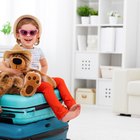
What to Pack for Disney World

What to Wear on a Cruise

Dry Suits vs. Wetsuits
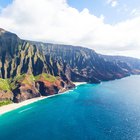
Best Time of Year to Visit Hawaii
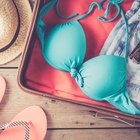
What to Pack for a Cruise

What to Wear: Cruise Wear for Ladies

Best Time to Visit Bora Bora

5 Tips for a Family Vacation in Costa ...

Family Naturist Activities
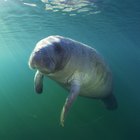
Snorkeling in Clearwater, Florida

Recommended Formal Attire for Hot ...
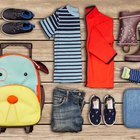
The Ultimate Packing List for Kids

How to Dress for Colorado Winter Weather

Proper Guest Attire for a Late ...

What to Wear to a Clambake

When to Wear a Wetsuit in Open-Water ...

Rash Guard for Swimming

How to Wear a Suit in the Rain
References
- NOAA National Weather Service Weather Forecast Office: Climate of Hawai'i
- Her Packing List: Ultimate Female Travel Packing List for Hawaii (in summer)
- Go Visit Hawaii: Checklist of What to Pack for Your Hawaii Vacation
- The Office of Mauna Kea Management: Visiting Mauna Kea Safely and Responsibly
- Go Hawaii: Haleakala National Park, Maui
Writer Bio
A writer of diverse interests, Joanne Thomas has penned pieces about road trips for Hyundai, children's craft projects for Disney and wine cocktails for Robert Mondavi. She has lived on three continents and currently resides in Los Angeles, where she is co-owner and editor of a weekly newspaper. Thomas holds a BSc in politics from the University of Bristol, England.